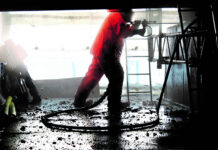
SSE Renewables has joined the Global Offshore Wind Alliance (GOWA) to share its best practice in the delivery of offshore wind to help meet the alliance’s ambition of at least 380GW offshore wind capacity built by 2030.
GOWA was launched last year at COP27 by the International Renewable Energy Agency (IRENA), the Global Wind Energy Council (GWEC), and the Danish Government. Members include Australia, America, Denmark, Germany, Norway, Japan, Ireland, and the UK.
In joining GOWA, SSE Renewables said it will seek to share its experience, knowledge, and best practice in the delivery of offshore wind to help meet the Alliance’s ambition of seeing at least 380GW offshore wind capacity built by 2030 and an installed capacity increase of at least 70 GWper year from 2030.
SSE Renewables said it is ‘uniquely’ positioned to support the ambitions and goals of GOWA. The developer is currently building more offshore wind than any other company in the world, including the 3.6GW Dogger Bank Wind Farm, which will be the largest offshore wind farm in the world when completed in 2026, and the 1.1GW Seagreen Offshore Wind Farm, which will be the world’s deepest fixed bottom project.
As well as its work in the UK and Ireland, SSE Renewables is also bringing its expertise and capability to support the rapid build out of offshore wind to selected international markets, including Japan through SSE Pacifico; the Netherlands; Spain; and Australia.
Speaking at the announcement at WindEurope 2023, Alexandra Malone, director of corporate affairs at SSE Renewables, said, “SSE Renewables is delighted to be joining GOWA so we can share our experience and learnings with governments and other stakeholders with the aim of accelerating offshore wind deployment globally.
“GOWA is an ideal forum for collaboration to ensure the right permitting, policy and market frameworks are in place. We are also looking forward to sharing our ideas on how to maximise the wider benefits of offshore wind to nature and biodiversity, and on how to support local communities, thereby ensuring a fair and just transition.”











